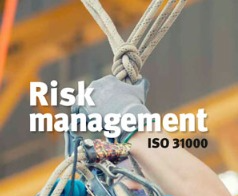ISO 31000:2018 – Risk Management System: Building a Culture of Resilience and Confidence
In today’s unpredictable business environment, organizations face various internal and external risks—financial, operational, environmental, technological, and reputational. Managing these risks effectively is crucial to ensuring stability, growth, and sustainability. This is where ISO 31000:2018, the international standard for Risk Management, plays a vital role in helping organizations identify, assess, and control uncertainties systematically.
What is ISO 31000:2018?
ISO 31000:2018 is a globally recognized standard developed by the International Organization for Standardization (ISO) that provides guidelines and principles for effective risk management. Unlike other ISO standards, ISO 31000 is not a certifiable standard but serves as a flexible framework to help organizations design, implement, and improve their risk management strategies.
The standard can be applied to any organization—regardless of size, sector, or type—and is designed to integrate risk management into all areas of operations and decision-making processes.
Objectives of ISO 31000:2018
The main objectives of ISO 31000 are to:
-
Identify and understand potential risks that may affect organizational objectives.
-
Minimize negative impacts and maximize opportunities.
-
Enhance decision-making by integrating risk-based thinking into management processes.
-
Build organizational resilience by preparing for uncertainties.
-
Promote a proactive culture of continuous improvement and accountability.
In essence, ISO 31000 helps organizations become more confident and capable in managing risks effectively.
Key Principles of ISO 31000:2018
The standard is built on a set of fundamental principles that ensure risk management is effective, efficient, and embedded within the organization’s culture:
-
Integrated: Risk management should be part of all organizational processes.
-
Structured and Comprehensive: A systematic approach ensures consistent and reliable results.
-
Customized: It should be tailored to the organization’s context and objectives.
-
Inclusive: Involving stakeholders improves awareness and decision-making.
-
Dynamic: It should anticipate, detect, and respond to changes promptly.
-
Best Available Information: Decisions should be based on accurate and reliable data.
-
Continual Improvement: Risk management practices must evolve with organizational changes.
Benefits of Implementing ISO 31000:2018
Implementing ISO 31000 delivers multiple strategic and operational benefits:
1. Improved Decision-Making
By integrating risk assessment into planning and operations, organizations can make informed and data-driven decisions.
2. Enhanced Business Resilience
The framework helps identify potential threats early, reducing the likelihood of disruptions and ensuring business continuity.
3. Increased Stakeholder Confidence
A structured risk management approach builds trust among investors, customers, regulators, and employees.
4. Cost Reduction and Efficiency
Proactive risk identification minimizes losses, accidents, and compliance failures, resulting in long-term cost savings.
5. Compliance and Governance
It supports adherence to legal, regulatory, and industry-specific requirements by embedding accountability and transparency.
Who Can Use ISO 31000:2018?
ISO 31000 is suitable for any organization, including:
Regardless of the sector, ISO 31000 provides a practical and scalable framework for managing uncertainty.
Conclusion
In an era where uncertainty is the only constant, ISO 31000:2018 provides organizations with a clear and structured path toward managing risk effectively. It enables businesses to anticipate challenges, minimize losses, and seize opportunities, ensuring long-term growth and sustainability.
By adopting ISO 31000 principles, organizations not only strengthen their internal controls but also foster a proactive culture that embraces change and innovation. It’s not just about managing risks—it’s about mastering them.






